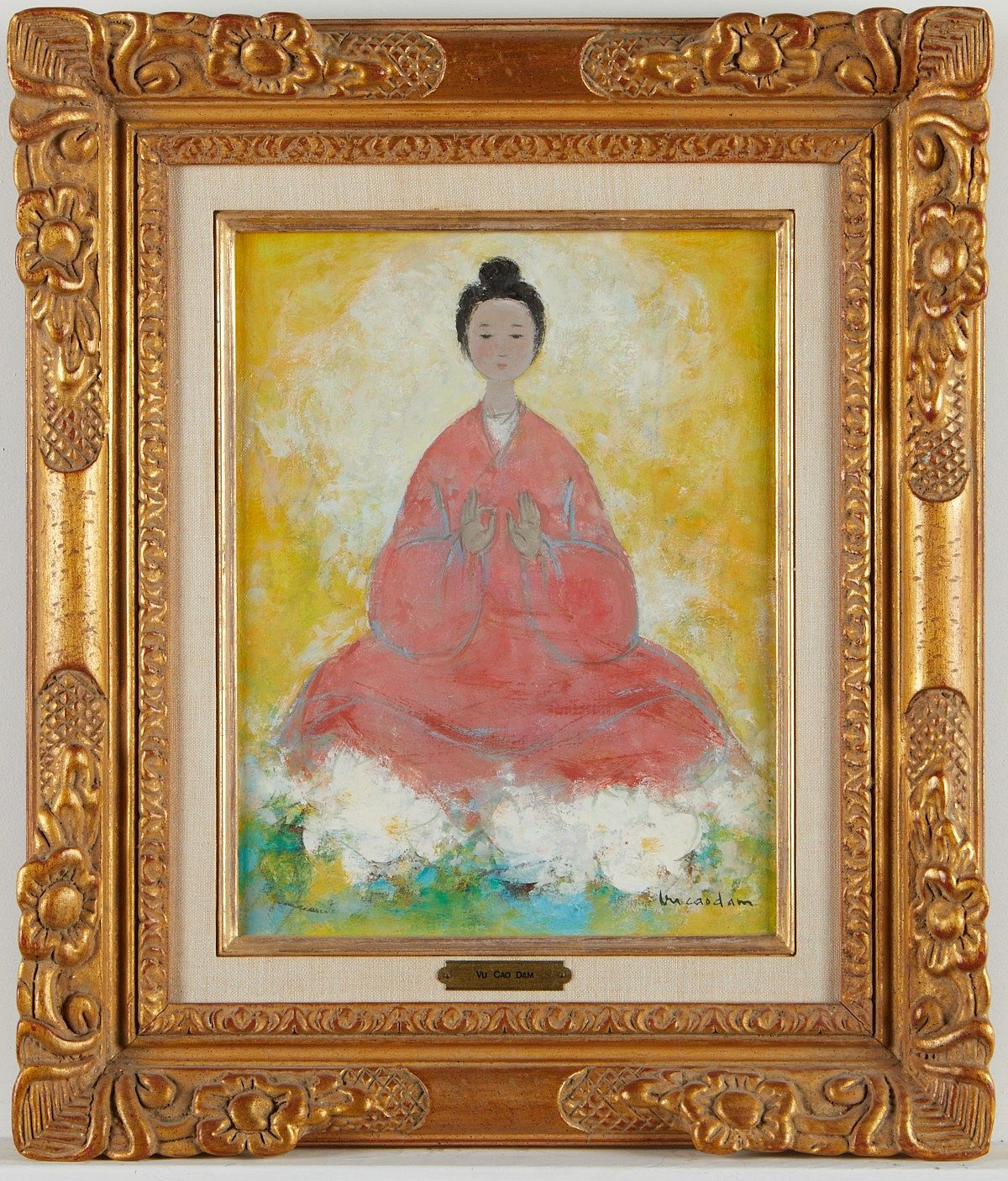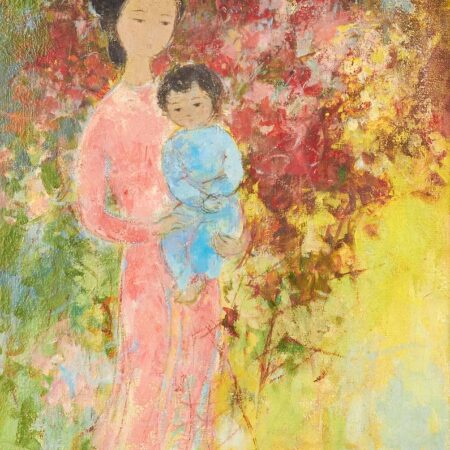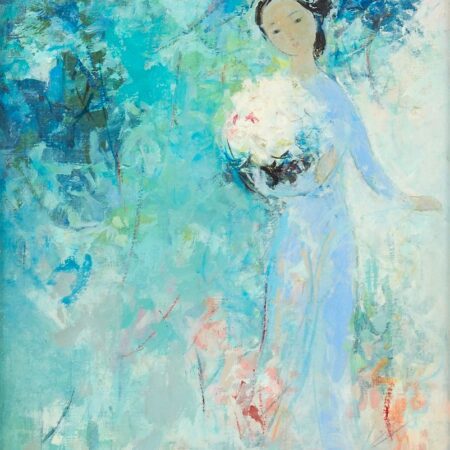
Vu Cao Dam (Vietnamese/French, 1908-2000).
Oil painting on canvas titled “Divinite,” depicting a woman in pink robes seated in prayer or meditation over a bed of graceful white flowers. Signed along the lower right. Biography: Born in Hanoi in 1908 to a well-to-do family, Vu Cao Dam displayed an early interest in the arts. His father, a well-educated Catholic, brought him up in a home surrounded by traditional Chinese calligraphy and a wide range of cultural influences. In 1926, he began his formal artistic education at the painter Victor Tardieu’s …cole des Beaux-Arts de l’Indochine, now the Vietnam University of Fine Arts. Tardieu and his instructors taught academic European painting to his students as well as decoration, architecture, anatomy, and sculpture. It was at sculpture that young Vu Cao Dam most excelled, and he joined the newly minted sculpture program at the …cole des Beaux-Arts, where he created several bronze busts that won him early acclaim.
In 1931, following his graduation from the …cole des Beaux-Arts de l’Indochine, Vu Cao Dam received a scholarship to continue his art education in Paris. He began his Parisian studies at the CitÈ Internationale Universitaire de Paris. During his first year there, Vu Cao Dam received the prestigious honor of an invitation to display his works in the Exposition Coloniale Internationale. He then continued his studies at the …cole du Louvre, where he was able to view the works of the great European academic masters he had been trained to emulate. However, he was most compelled by more recent works of the impressionists and post-impressionists, as well as great sculptors such as Auguste Rodin and Alberto Giacometti. Vu Cao Dam’s career took off following the completion of his education. He and fellow Vietnamese expatriate Le Pho, a dear friend with whom he had studied in Hanoi, found success and popularity on the Paris art scene.
Vu Cao Dam began sculpting what would become his most famous subject matter: elegant Vietnamese ladies. He continued to paint as well as sculpting, often painting on silk, a form of painting taught at the …cole des Beaux-Arts de l’Indochine. He also began to put down personal roots in France, marrying and having two children. When World War II broke out, Paris became a dangerous place to live and work; Vu Cao Dam sent his family to the countryside to escape the Nazi-occupied city. However, he stayed in Paris, frantically creating art out of any material available under strict rationing, and bicycling the 100-km distance to see his family whenever he could. During this time, he executed several of what are now seen as his finest works out of terracotta, demonstrating his resourcefulness and commitment to his art. In 1949, plagued by ill health, Vu Cao Dam moved to the south of France with his family, to a villa named Les Heures Claires.
The bright, airy atmosphere of southern France had a large impact on his painting, as did the work of his new neighbor, Marc Chagall. His works take on a sunny, pastel air at this point. Throughout the 1950s and into the early 1960s, Vu Cao Dam gained international success, exhibiting throughout France, particularly in Nice, as well as in Sweden, Belgium, and the UK. In the early 1960s, Vu Cao Dam signed an exclusive contract with Wally Findlay Galleries in the United States. This brought his work notoriety in the United States, and there are many fine examples of his work in the United States that originate from this partnership. Vu Cao Dam remained in France for the rest of his life, continuing to create art until his death in 2000.
Unframed; height: 14 in x width: 11 in.
Framed; height: 21 1/2 in x width: 18 1/4 in.
$42,000

